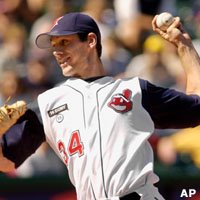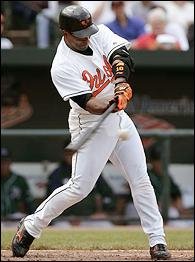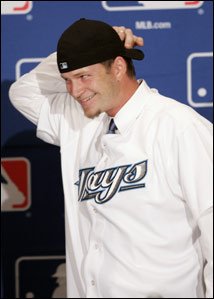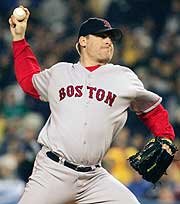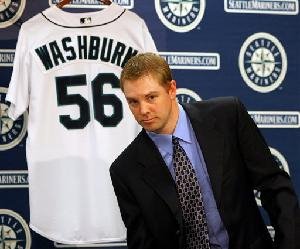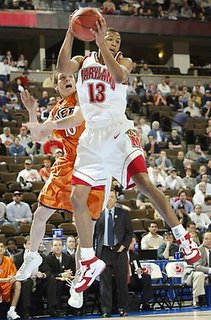AL Central: Detroit Tigers
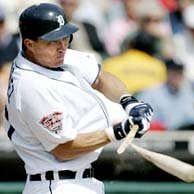
Lineup: The Tigers have some big names in their lineup, but last season, their two best offensive players were Chris Shelton and Placido Polanco. Shelton, with a .510 SLG, will anchor the lineup, along with Magglio Ordonez and Ivan Rodriguez, although his production has dwindled. Polanco is the Tigers best hope for getting on base, recording a .383 OBP last season. The right side of the infield is set. Carlos Guillen is solid at shortstop, but Detroit wants more out of Brandon Inge at third. Magglio Ordonez was supposed to be the Tigers big bat last season, but he was hurt. Craig Monroe is adaquate at best in left, and center field is in flux. Curtis Granderson slugged .497 in limited action last season, but Nook Logan's speed may allow him to see some playing time. Dimitri Young will start at DH despite a lackluster 2005, leaving Carlos Pena out of the mix. A trade is possible. The bench is nothing special to say the least, with Vance Wilson, Pena, Omar Infante, and Logan, but it could be worse. The Tigers problem is that, last year at least, only two players had what can be counted as a good year, while everyone else played well enough to keep their jobs, but not well enough to lift the Tigers out of 4th. Unless players like Ordonez, Rodriguez, and Young step it up, the offense will have problems.
Starting Pitching: The Tigers have a good young pitching staff, but the ace is Kenny Rogers, who is over 40 years. Cameramen aside, Rogers actually had a very good season for Texas in 2005, and considering it is a lot easier to pitch well in Detroit than in Texas, he should be able to duplicate his success. The rest of the Tigers rotation is filled out with young guns Jeremy Bonderman, Mike Maroth and Nate Robertson. All of them had ERA's in the 4's last season, but they are getting older now, and with experience, could blossom into a good starting rotation. The 5th spot is unsettled, as the club lost Jason Johnson to Cleveland. Justin Verlander is a possibility, but he hasn't proven he can be effective at the major league level.
Bullpen: The bullpen could be a spot of weakness for Detroit. With Troy Percival probably at the end, the club went out and signed a closer, almost 38 year old Todd Jones. Jones put up great numbers for Florida last year, but it is unlikely he will do it again; before his 2.10 ERA last year, he had not had an ERA under 4 since the 2000 season. The most reliable set up man is Jamie Walker, who in the last four seasons has had a WHIP under 1.30 and an ERA under 3.72. Chris Spurling has only pitched two seasons, but in both he pitched over 70 innings and has a career WHIP of 1.22. The rest of the pen is solid, but woefully inexperienced. Fernando Rodney came on well last season, posting a 2.86 ERA in 44 IP, but his two previous seasons were both horrid. The is true for Franklyn German, who gave the Tigers 59 solid innings last year, but would only put 2005 on a resume. Roman Colon, Wilfredo Ledezma, and Jason Grilli round out the rest of the bullpen, but none of them have put together even one solid full big league season. There is some potential in the bullpen, but Detroit is relying on too many incosistent pitchers.
X Factor: Magglio Ordonez. The Tigers paid him over $7 million last season, and even when healthy, he didn't produce. The Tigers need him to anchor the lineup with a power bat, without a 30 home run, SLG over .500, season from him, the lineup will lack a true power bat.
Biggest Strength/Weakness: Position depth/Pitching depth
Projection: 4th place in the AL Central.

